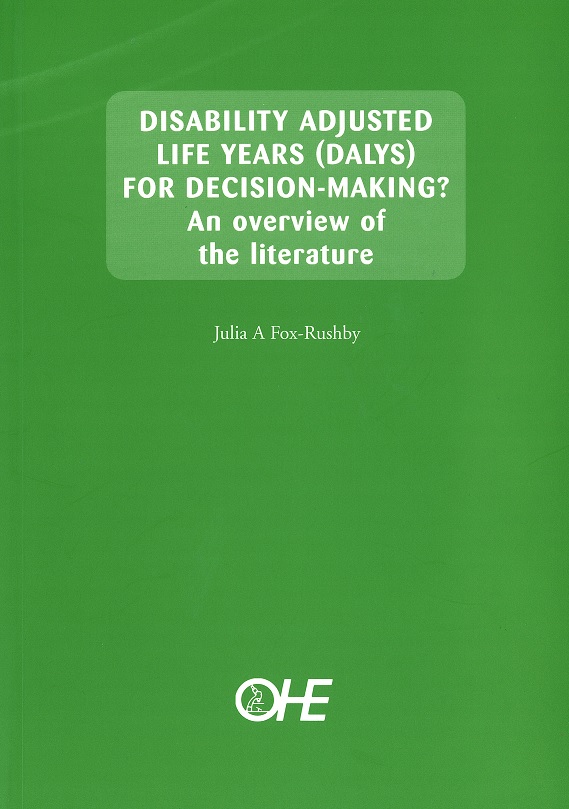Disability-adjusted life years (DALYs) were introduced in 1993 amid the pages and policy directives of the World Development Report ‘Investing in Health’ (World Bank, 1993). DALYs…
Disability-adjusted life years (DALYs) were introduced in 1993 amid the pages and policy directives of the World Development Report ‘Investing in Health’ (World Bank, 1993). DALYs are a measure of life years lost from disease, adjusted for assumptions about disability as well as…
Disability-adjusted life years (DALYs) were introduced in 1993 amid the pages and policy directives of the World Development Report ‘Investing in Health’ (World Bank, 1993). DALYs are a measure of life years lost from disease, adjusted for assumptions about disability as well as the impact of age and future time. They were launched to widen the measurement of disease from the presence of morbidity and mortality, usually cited by the World Bank, to include the impact on disability in a commensurable way with mortality. The World Development Report was ground breaking for two reasons:
● it was the first attempt to assess the global burden of disease by region of the world in this way; and
● it was the first attempt to bring together results from various cost-effectiveness analyses of health interventions by disease using one outcome measure (DALYs) to recommend global health policies.
This monograph outlines the construction, uses and criticisms of DALYs and hence summarises the current state of thinking about this relatively new measure. The monograph highlights the range of values underlying the development and use of the measure. I reflect on the impact that DALYs have had on the types of agendas set and decisions made about which interventions ameliorate disease in high-, middle- and low-income countries.
